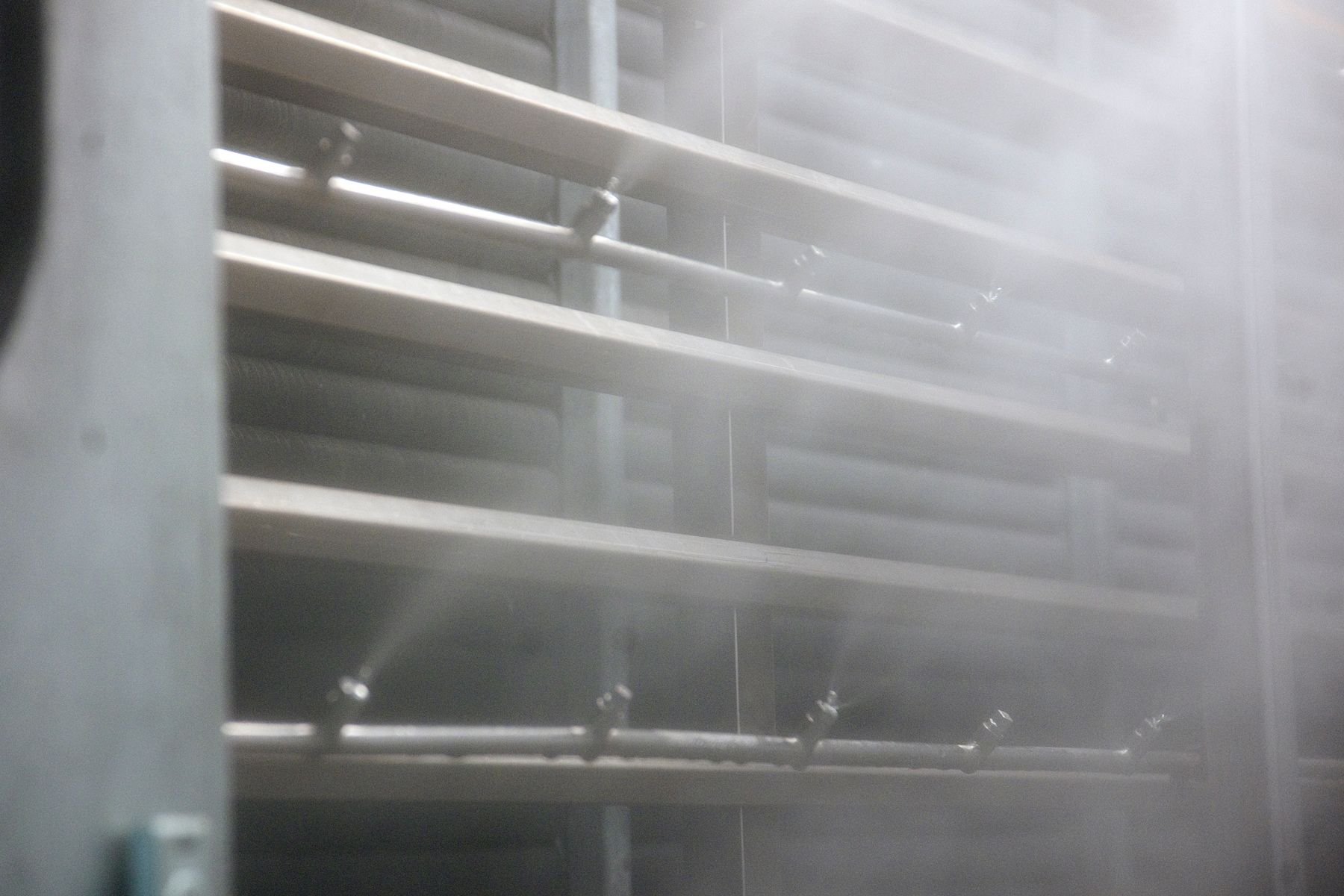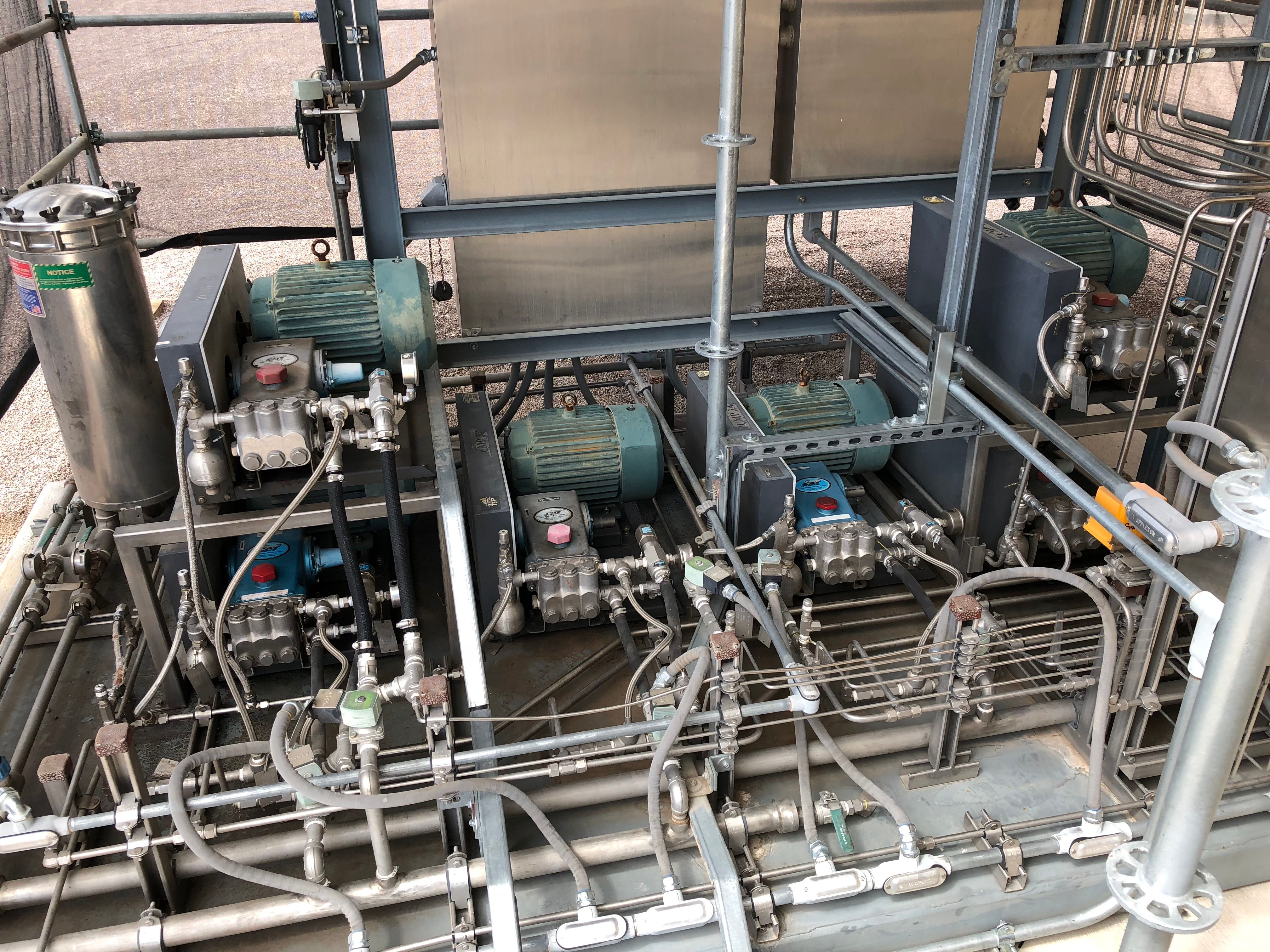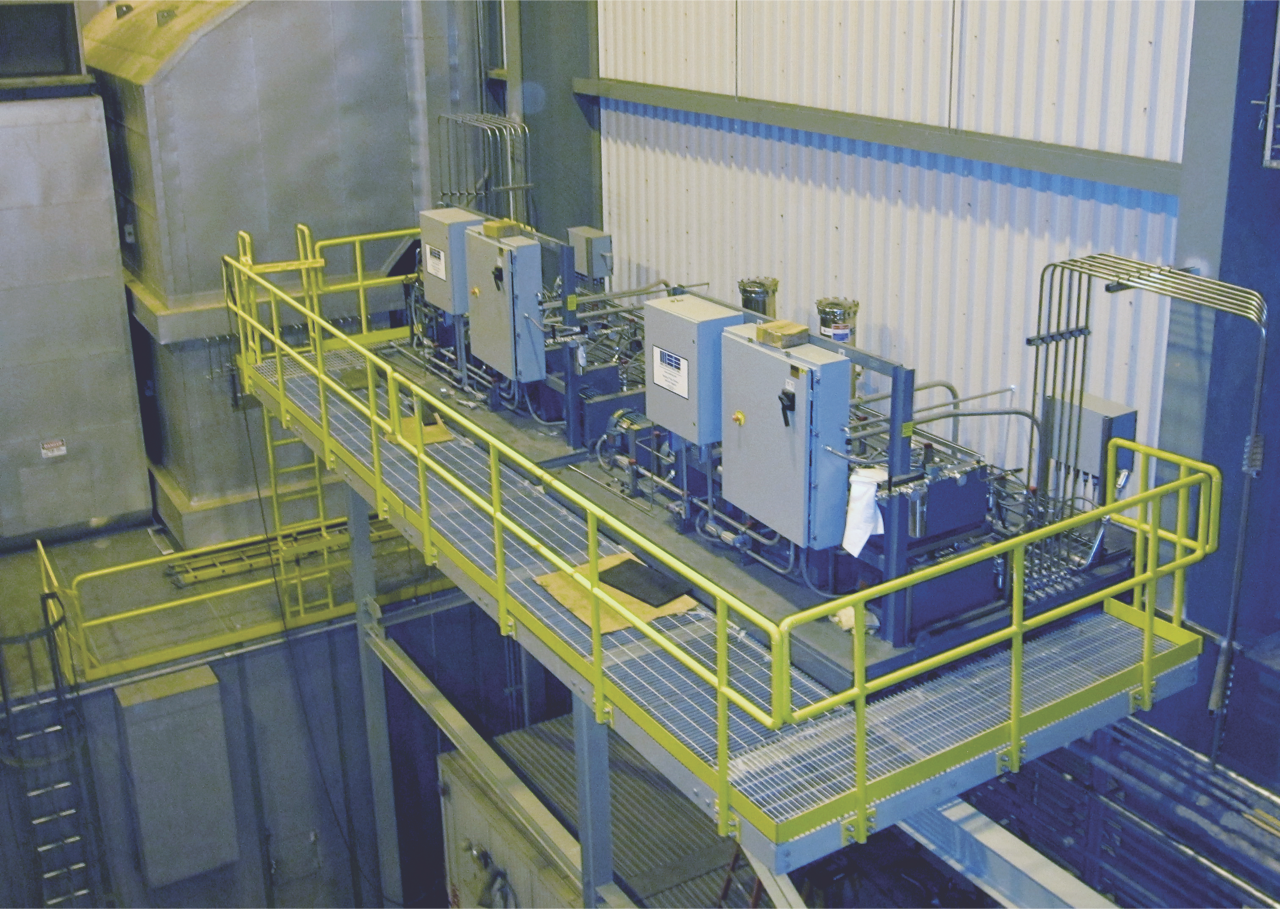Fog system upgrades
Reducing maintenance costs by upgrading aging inlet air-cooling systems.
Thousands of fogging systems operate around the world. Courtesy of Mee Industries.

The increase in renewable energy production over the past decade has raised the demand for peaking power. This, in turn, is driving demand for fog system upgrades to reduce maintenance requirements, or to bring old, abandoned fog systems back into service.
Gas turbine inlet air fogging systems became popular in the 1990s and have remained popular ever since. There are thousands of systems in use around the world today, many of which are now several decades old. Older fog systems can require a lot of maintenance, so upgrading them reduces costs over the long term.
Modern high-pressure pumps require much less maintenance than older pumps. Older ceramic plunger pumps can be replaced with seal-flushed pumps, which can operate for several cooling seasons without needing their seals changed. Another option is to upgrade to water lubricated pumps. These pumps are direct-drive, so there are no drive belts to service, and they have no crank case oil to replace. They can operate 8,000 hours or more before requiring maintenance.
Similarly, many of the Programmable Logic Controllers (PLCs) supplied to older fog systems are obsolete and are no longer supported by the manufacturer. These can be upgraded to modern PLCs, which can often be better integrated with the plant Distributed Control System (DCS).
Some early fog systems had nozzle manifolds that didn’t cover the full cross section of the inlet duct, meaning as much as thirty-percent of the air was not fogged. Correcting this problem with new nozzle lines can increase the power boost by a megawatt or two on a large turbine.
Further, the addition of high-pressure filters and automatic drain valves can reduce nozzle plugging. If a fog system is not used for several days, and stagnant water is left in the high-pressure lines, biological growth can occur, which can lead to fog nozzle plugging.

Fog system for an FT8 gas turbine before and after upgrading to water lubricated pumps.

The Edward W. Clark Generating Station in Nevada is an example of a plant that decided to upgrade its fog systems. The 1.1 GW plant is owned by NV Energy and is located east of Las Vegas. Its gas turbine fleet includes twelve PW Power Systems SwitftPac peaking units that produce 52 MW each. These units were installed in 2008 with fogging systems from Mee Industries included as part of the original equipment.
George Shambo, Senior Project Manager for Generation at NV Energy said, “our FT8s are peaking units and they must be available 24/7 to provide power when requested from the grid operator.” The gas turbines are maintained in ready mode. This enables them to be started when needed. They can reach full output in just six minutes.
The SwitfPacs are operated during the May to September summer season. Extremely hot days are the norm in southern Nevada with temperatures often reaching over 110°F. The twelve FT8s would suffer a combined power loss of more than 140 MW if the fogging systems were not operational, making reliable systems extremely important.
Fog system skids such as this are commonplace in power plants and industrial facilities. Courtesy of Mee Industries.

Each SwiftPac unit has its own fog skid. The skids provide high-pressure water to two nozzle grids that are located in the inlets of each of the FT8 gas turbines that comprise the SwiftPac. The original skids offered eleven stages of fogging, with enough fog to saturate the air on a hot day, plus two additional stages that gave an additional wet compression power boost—power augmentation that occurs when the fog spray evaporates inside the compressor.
The Clark Generating Station upgraded the fogging systems ten years later in 2018. The number of fogging stages was greatly reduced in the upgrade. Shambo noted that the plant generally needs all possible power immediately. Therefore, there was no need for a sophisticated arrangement of incremental stages of fogging. The new skids each only offer two stages of cooling. “Two stages are more than enough for peakers because we are either off or full on,” said Shambo. “The revised PLC is performing very well.”
Each of the twelve original skids had six ceramic-plunger pumps. These pumps were replaced with two water-lubricated pumps per skid. The results have been worthwhile, according to Shambo. The water-lubricated pumps don’t need any lubrication and require almost no attention. This is a welcome relief to the maintenance department. The plant went from having to maintain 72 pumps with associated motors, belts and lubrication and seal-change requirements to only having to take care of 24 direct-drive pumps.
The original Siemens PLCs on each skid were replaced with PLCs with upgraded control logic. They are programmed to receive data from a weather station onboard the skid. The PLCs operate fog stages to maintain saturation at the turbine inlets as weather conditions vary. The PLC is tied into the plant DCS.
The maintenance load for the fog systems has been greatly reduced. Shambo said the old pumps, motors, and related lubrication systems required a lot of babysitting. He had to constantly tinker with one skid or another and could hardly go one day without having to do something with the system.
“The new fogging system is saving us about 600 man-hours a year in maintenance time, helping us to greatly reduce our maintenance budget,” said Shambo. “In two years of operation through demanding summers, we haven’t had any issues to address with the fogging system since the upgrade. It is essentially maintenance-free.”
Shambo explained that there is no real pattern to their operation, beyond high usage during summer. But they typically run many hours per year and have frequent starts. The summer of 2020 saw the peaking units experiencing particularly high usage. Shambo reported that the turbines and fog systems had around 1,000 run hours each, and around 42 starts, that year.
“The MeeFog system provides us with a power boost of up to 6 MW per FT8 turbine, depending on conditions,” said Shambo. “Fog cooling makes sense for us as a cost-effective way to produce additional power.”
He added that the system’s water consumption is low compared to alternative systems such as media-type evaporate coolers. This is an important point in a region experiencing regular droughts. Laws are on the books that limit the water usage of industrial consumers. And in any case, the plant operates in the middle of a desert. Saving water is key and the new system is helping the utility to keep its consumption low. ■
